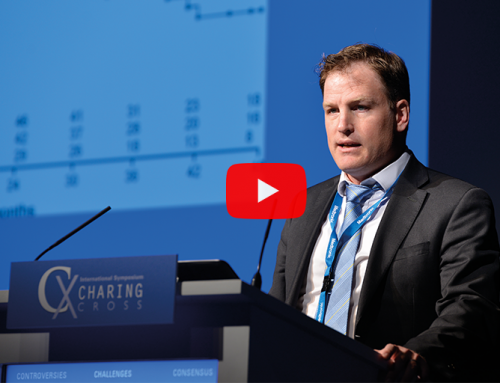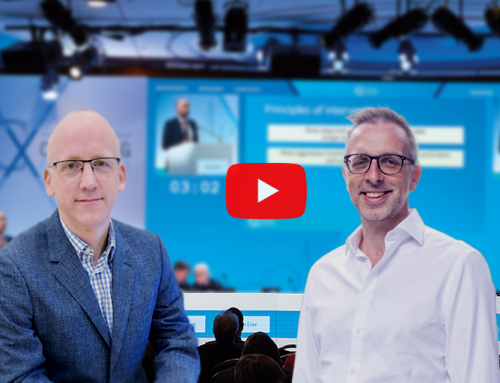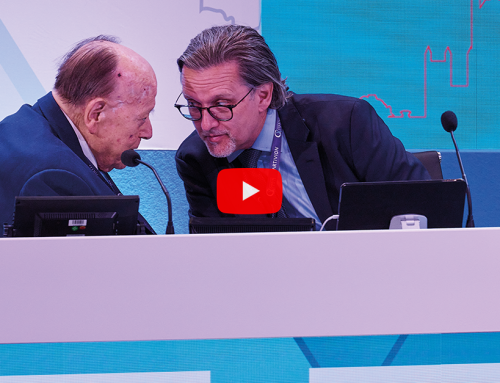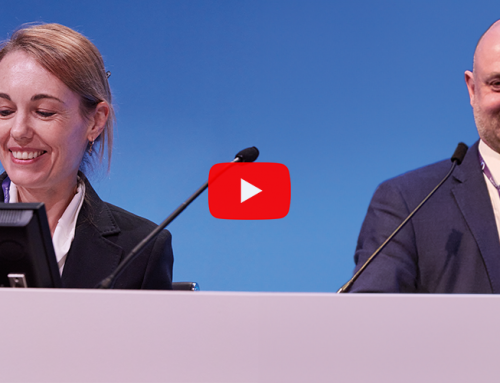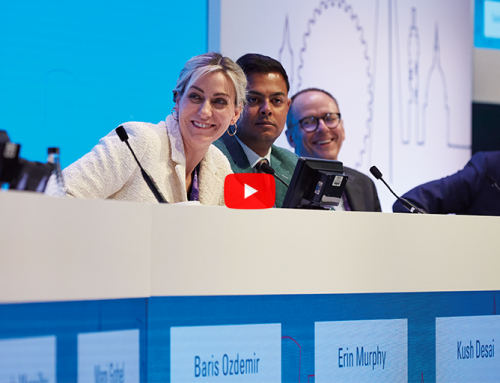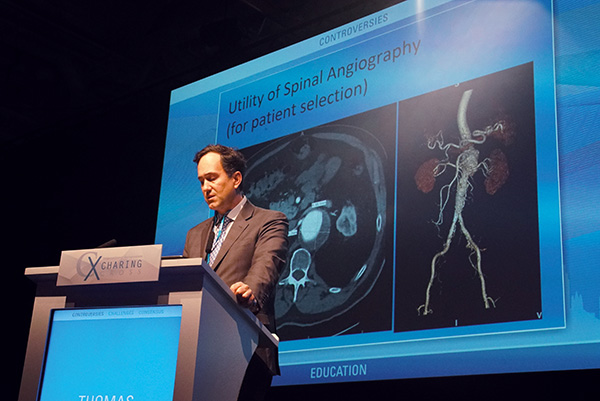
A physician-sponsored investigational device exemption trial on thoracic endovascular aortic repair (TEVAR) using a new thoracic stent graft (Valiant thoracoabdominal aortic aneurysm stent graft, Medtronic), along with its initial 30-day data, was revealed at a Podium 1st presentation at CX 2018 by Thomas Maldonado (New York, USA). The early results showed high technical success (94%) and low mortality (9%).
The Valiant thoracoabdominal aortic aneurysm stent graft is currently undergoing feasibility trials as part of physician-sponsored investigator device exemption (PS-IDE) at select centres in the USA. Maldonado presented early results of the first 32 patients treated at six US sites, showing high technical success (94%) as well as good efficacy and safety profile at 30 days.
The PS-IDE trial is designed as a prospective, single-centre, non-randomised multi- or single-arm study with five years of follow-up. All sites use similar protocols, with intent of pooling data. Enrolment includes patients with a maximal aneurysm diameter of >5.5cm (>4.5cm symptomatic) and growth of >0.5cm in six months. In the first 32 patients, 12 (38%) were Crawford type II and 11 (34%) type III.
Although endovascular approaches to thoracoabdominal aneurysmal disease provide advantages over open repair—such as improved early survival, shorter recovery period and overall less invasiveness—current device options have certain limitations, argued Maldonado. Devices for all patient anatomies are not currently available “off-the-shelf”, Maldonado said, “and importantly, distal perfusion is impeded and not stageable in all cases”.
To meet clinical needs in this area, “In 2014, Patrick Kelly of the department of Vascular Surgery at Sanford Health in Sioux Falls, USA developed a novel branched endograft for thoracoabdominal aortic aneurysms which promised to be fully off-the-shelf, requiring no customisation,” Maldonado said, “leading to the 2016 Valiant thoracoabdominal stent graft system”—a prototype of Kelly’s multibranched stent-graft system for endovascular treatment of thoracic aneurysms.
Current data are early, but Maldonado reported that major adverse events included three events of paraplegia (9%). “It goes without saying that you are covering a fair amount of aorta here, so the graft [which extends 17cm above the coeliac artery] is perhaps not ideal for Crawford type IV aneurysms”, he explained, as it could cover significantly healthy aorta.
Maldonado suggested these results emphasise the importance of applying thorough spinal drainage protocols, rescue protocols, and careful patient-selection, as well as implementing a multidisciplinary team involvement in each case and recognising the value of staging procedures.
Several sites are engaged in the Valiant PS-IDE trial, which continues to address some of the key limitations of existing technologies, and to minimise risk of spinal cord ischaemia events “an anticipated second-generation manifold device will be significantly shorter and better suited for type IV anatomy”, Maldonado concluded.



